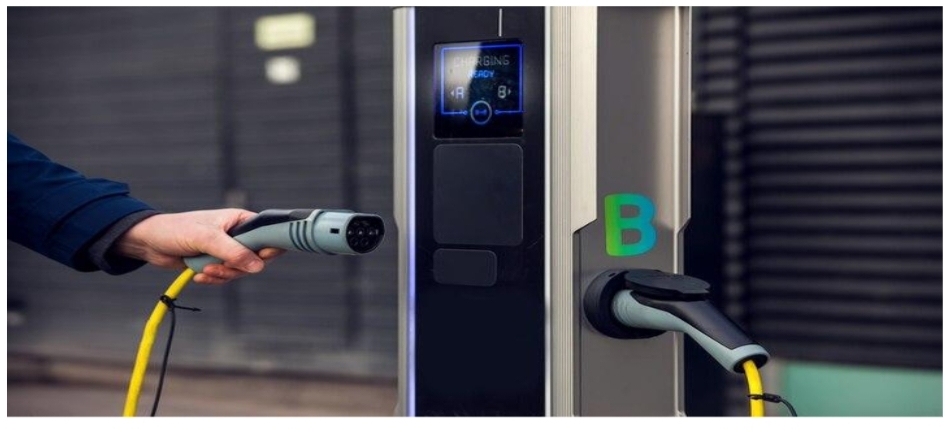
The rising popularity of electric vehicles (EV) is changing the perception of many people about transportation. While for most EV owners, charging at home is but a simple convenience, public charging stations become really important when it comes to taking long-distance trips or drivers need to charge at any given time.
Still, though there are quite a few public EV chargers, many drivers wonder how to best use them or where to find them, not to mention how much they will charge. Down below is a guide that seeks to answer the 10 common questions about public EV charging: getting through the issues in many ways.
You can also find reliable ev charging solutions at ApexCharger; they are an established trusted provider of high-end quality chargers for home or public use.
1. Where Can I Find Public EV Charging Stations?
Public EV charging stations show up in lots, reel malls, hotels, offices, and along rest areas on highways. Several cities will have dedicated EV charging hubs, and networks including ChargePoint, EVgo, Electrify America, and Tesla Superchargers provide
For finding a station near you, use:
✔ Google Maps – Search “EV charging station” to find one nearby.
✔ EV Charging Apps – Apps like PlugShare, ChargeHub, or the Tesla app will help track down current station availability and location.
✔ Automaker Navigation Systems – Many EVs have built-in maps that highlight charging stations.
Seamless charging experience: ApexCharger enables you to use advanced charging solutions from many public locations.
2. How Long Does It Take to Charge at a Public Charging Station?
Charging times depend on battery sizes, charger types, and current charge levels. Here’s a rough estimate:
- Level 1 Charging (120V) – Adds 2-5 miles of range per hour (not commonly found at public stations)
- Level 2 Charging (240V) – Adds 10-60 miles per hour; this charger is mostly found in workplaces and shopping malls.
- DC Fast Charging (Level 3) – Adds anywhere between 100-250 miles in 20-45 minutes, which is optimal for road trips.
Most drivers using public chargers would instead use DC fast charging when they need a fast recharge, whereas Level 2 chargers are very good for a longer stop.
3. How Much Can Using a Public EV Charger Actually Set You Back?
Public rates for charging can range from provider to location to charging speed. Here’s what you might find around:
- Level 2 Charger –Charging usually costs between $0.10 and $0.30 per kWh. Therefore, charging an entire battery generally costs between $5 and $15. However, some workplaces or shopping centers offer such services free of charge.
- DC Fast Charging-Costs of $0.30-$0.60 per kWh; thus, a quick charge will cost between about $10 and $30. Premium rates may apply at Electrify America or Tesla Supercharger locations.
- Subscription Plans-Available from some networks are memberships that reduce the per-kWh rate for users to receive cheaper electric charge fees.
Save some bucks on charging solutions by visiting ApexCharger for options that suit your budget.
4. Do I Need a Membership to Use Public EV Charging Stations?
Not necessarily, though some networks might have accounts to process payments while using these facilities on a pay-as-you go basis:
✔ Credit/debit cards
✔ Mobile payment applications (Apple Pay, Google Pay, etc.)
✔ RFID cards or network accounts.
If you plan to utilize any specific network more regularly, consider signing up for a charging membership to save some money.
5. Can I Use Any Public Charger for My EV?
All EVs will typically plug into a Level 1 or Level 2 charger, while DC fast charging is vehicle-specific. There are three main standards for DC fast charging:
- CCS (Combined Charging System): The CCS is the standard used by most non-Tesla EVs.
- CHAdeMO: This charging standard is primarily used by older Nissan Leaf models.
- Tesla Superchargers: This type of charging station is for exclusive use by Tesla vehicles (though some locations may now accommodate non-Tesla vehicles).
Check the charging port for your EV to see what chargers you may use with your vehicle.
6. How can the public charging station be known to be available?
Most charging networks send real-time status updates through their apps or web portals. PlugShare and ChargePoint are two services that inform users when a station is:
✔ Available- Ready for use.
✔ In Use- Currently occupied by another EV.
✔ Out of Service- Temporarily down.
Check availability before heading toward a station to avoid delays.
7. What happens if the battery of an EV runs out before reaching the nearest charging station?
Running out of power is a very rare eventuality. If it unfortunately happens, there are options such as:
– Roadside assistance: in an emergency incident of running out of charge, some automakers offer emergency charging services or towing to the nearest charging station.
– Another form of such service is mobile EV charging wherein one gets on-the-spot battery recharging.
– What you might do is take your EV to the nearest charging station by towing it.
To avoid this situation altogether, you should plan the route properly and use an EV trip planners or charging-oriented apps.
8. Is it allowed to leave my car at a charging station overnight?
There are charging stations that permit this kind of service; some charge leaving the cars parked overnight like in hotel charging or apartment complex charging. Other than that, public fast chargers usually have time limits imposed for its users so that no driver occupies that certain spot for a long time.
And to be good to your fellow EV users:
✔ Try to move it once it has finished charging,
✔ Have a look on what the station policy is before leaving your vehicle,
✔ Never use charging spaces for non-charging purposes. INTO THE UNKNOWN.
9. How Can I Charge My EV Faster at a Public Station?
To charge very efficiently:
✔ Always prefer DC fast chargers.
✔ Precondition your battery and in some models, it may even have a precondition that heats the battery before charging.
✔ Never charge 100% – charging goes down to a crawl after 80%. It does this to protect the battery.
✔ Avoid wait time for a charger by choosing low traffic times.
Find either a top-speed charging point or an ApexCharger location where you’ll enjoy efficient and ultra-fast charging solutions.
10. Are EV Charging Stations Publicly Open to All?
Yes. Some paragraphs below give precautions to make it even safer:
✔ Park in well-lit areas if charging at night.
✔ Lock your car and stay around while charging at unfamiliar places.
✔ Only patronize credible charging network to avoid low standard or non-working stations.
A third party to have a hitch-free and private charging experience is ApexCharger for its reliable charging platforms.
Getting Around Town has Never Been Easier
It is ever so handy to keep your vehicle juiced when you are on the go using a public EV charging point. Whether it is Level 2 charging at a shopping center or a DC fast charge on that most recent road trip, knowing how these stations operate can enable a smooth, stress-free charging experience.
Plan ahead, use charging apps, charge with knowledge about your vehicle, and charging EVs may be as simple and habit-forming as refueling a gas car. For high-class charging solutions, go to ApexCharger for reliable options built just for you.




